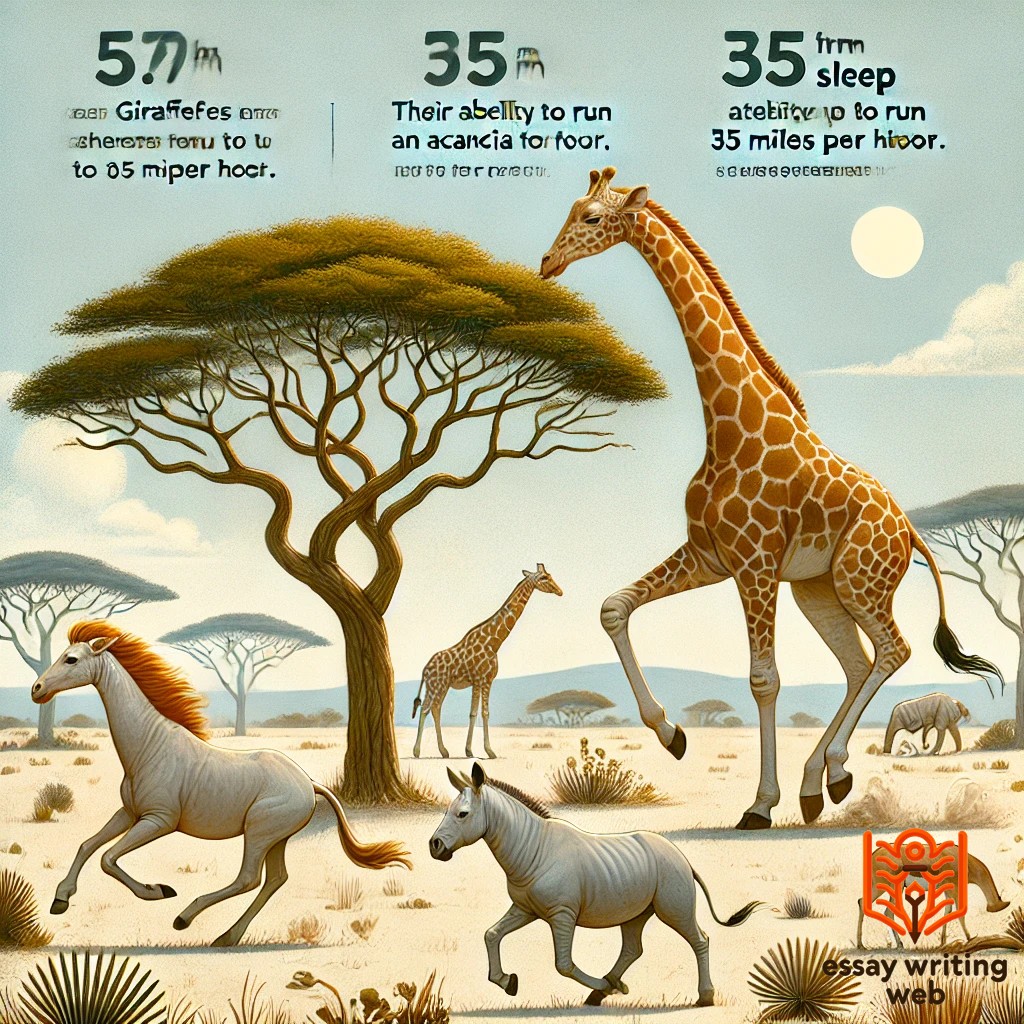 Essay Writing Web
Essay Writing Web
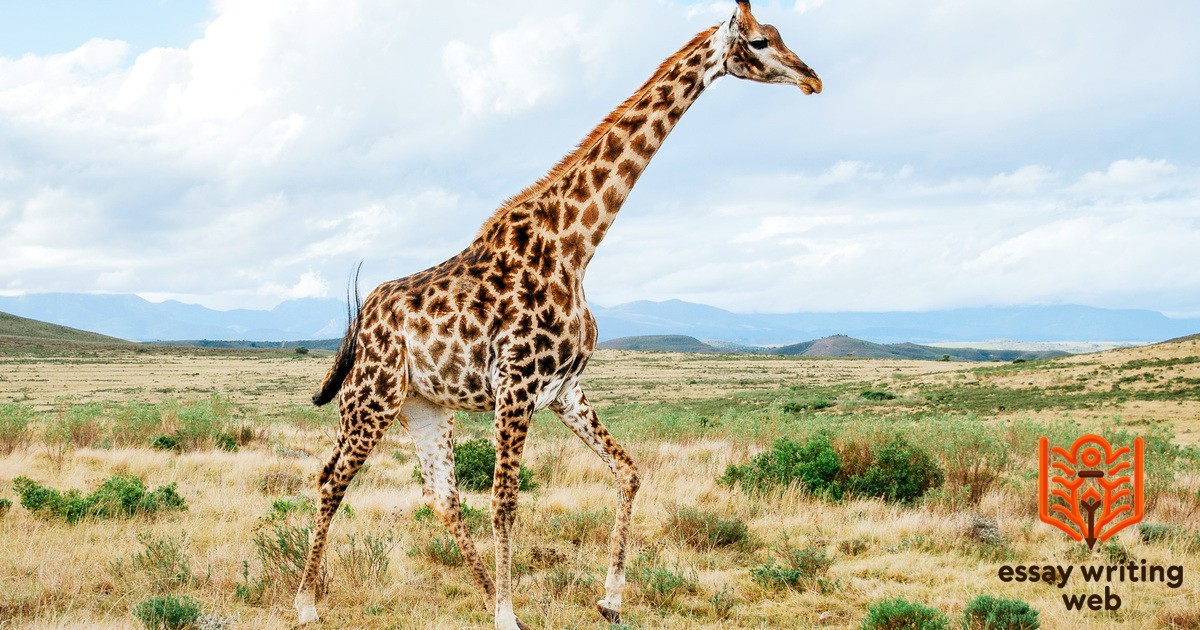
 19-09-2024
19-09-2024
 www.essaywritingweb.com
www.essaywritingweb.com
The giraffe, scientifically known as Giraffa camelopardalis, is one of the most iconic animals in the animal kingdom, renowned for its extraordinary height and distinctive appearance. As the tallest land mammal, adult giraffes can reach heights of up to 18 feet, thanks to their long necks and legs. This unique physical attribute not only sets them apart from other herbivores but also serves a vital purpose: enabling them to forage on the leaves of tall trees that are inaccessible to many other species. The giraffe's coat, adorned with a patchwork of irregular brown and cream patterns, provides effective camouflage in the dappled light of the savanna, helping them avoid predators.
Giraffes inhabit various regions across Africa, primarily in savannas and open woodlands where acacia trees abound. These majestic creatures are social animals, often found in loose herds that can vary in size. Despite their towering stature, giraffes are generally peaceful and exhibit a calm demeanor, relying on their height for both feeding and safety from threats. Their unique locomotion—an elegant, loping stride—allows them to cover large distances in search of food and water.
In addition to their physical and social traits, giraffes play an essential role in their ecosystem. By browsing on treetops, they help maintain the health of trees and promote new growth, supporting a diverse range of other wildlife. However, giraffes face significant challenges, including habitat loss and poaching, which have led to declining populations in recent years. Understanding and appreciating these magnificent animals is crucial for their conservation and the preservation of the ecosystems they inhabit. As we explore the world of giraffes, we uncover not just their unique characteristics but also the urgent need to protect them for future generations.
The giraffe is an extraordinary animal, instantly recognizable for its towering height and unique body structure. Standing as the tallest land mammal, adult giraffes can reach heights between 14 to 18 feet, with males typically being larger than females. This impressive stature is primarily due to their elongated necks, which can be up to six feet long. Contrary to popular belief, giraffes have the same number of neck vertebrae as humans—seven—but each vertebra is significantly elongated, allowing for increased reach when browsing for foliage.
Giraffes possess a distinctive coat marked by irregular patches of brown, orange, or tan, separated by lighter hues. This unique pattern not only adds to their beauty but also serves as effective camouflage in their natural habitat, helping them blend into the dappled sunlight of the savanna. Their long legs, which can be as tall as six feet, contribute to their graceful movement and allow them to run at speeds of up to 37 miles per hour over short distances.
In addition to their impressive height, giraffes have large, expressive eyes and long eyelashes that protect against dust and debris. Their prehensile tongues, measuring around 18 inches, are adapted for grasping leaves and stripping them from branches, showcasing their remarkable ability to thrive in a competitive feeding environment. Overall, the giraffe's physical characteristics not only make it a fascinating subject of study but also play crucial roles in its survival within the diverse ecosystems of Africa.

Giraffes, the tallest land animals, are known for their long necks and spotted coats. These majestic creatures are native to the savannahs, grasslands, and open woodlands of Africa. While all giraffes share common physical traits, there are different types of giraffes classified into distinct subspecies, primarily based on their geographical distribution and slight variations in their coat patterns and genetics. Today, scientists recognize four main species of giraffes, each with unique characteristics that distinguish them from one another.
The Northern giraffe is native to several countries across Central and East Africa, including Chad, Sudan, and Kenya. This species is divided into three subspecies:

The Reticulated giraffe, sometimes called the Somali giraffe, is easily recognizable by its distinct coat pattern. They have large, polygonal, liver-colored spots outlined by bright white lines, creating a net-like appearance. Found in northern Kenya, southern Ethiopia, and Somalia, this giraffe is one of the most visually striking subspecies. Reticulated giraffes have historically been abundant in their range, but their numbers have declined due to habitat loss and illegal hunting.
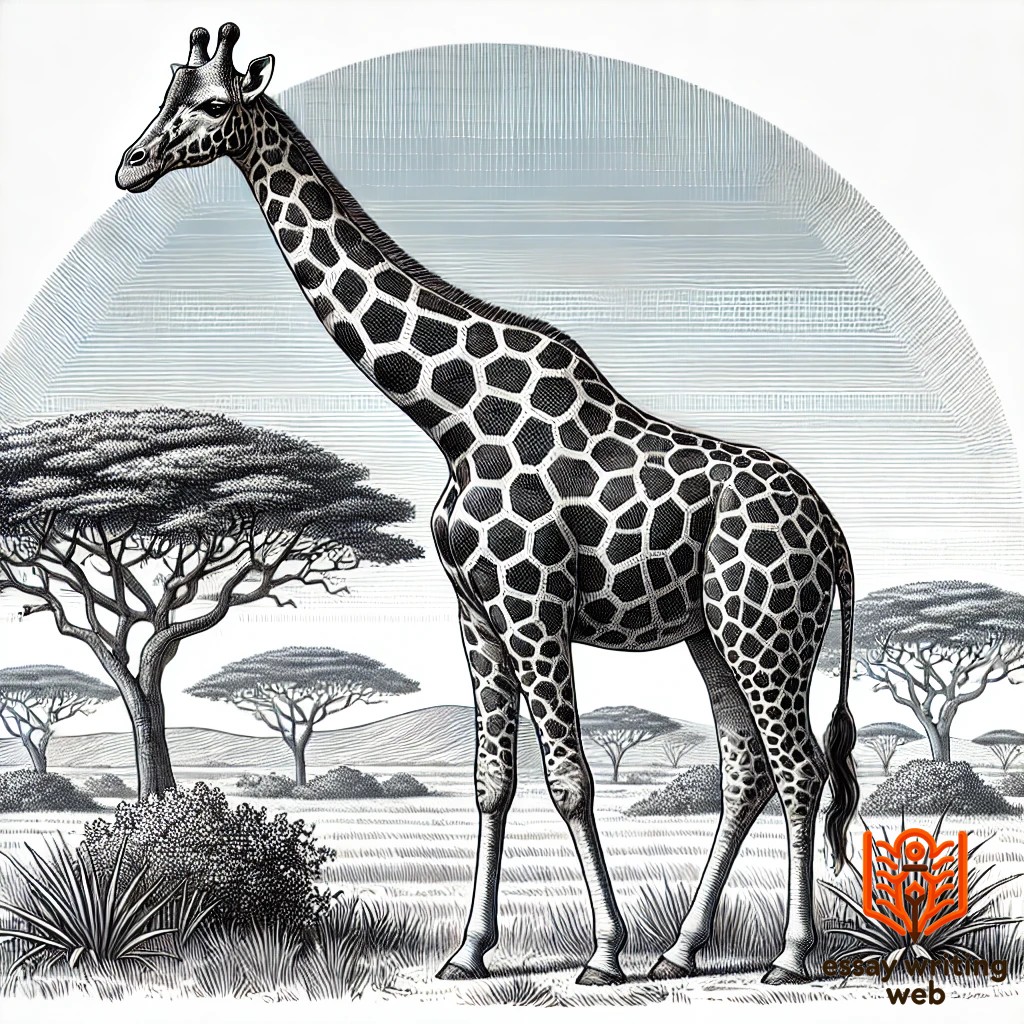
The Masai giraffe, also known as the Kilimanjaro giraffe, is found predominantly in Tanzania and southern Kenya. They are the largest giraffe species and can be identified by their irregular, vine-leaf-shaped spots that extend down to their legs. The dark patches on their coat are more distinct and irregular than those of other giraffes, giving them a rugged appearance. Masai giraffes are common in national parks and reserves, but their population is also threatened by human activities such as deforestation and illegal poaching.

Southern giraffes are native to southern Africa, particularly in Namibia, Botswana, South Africa, and Zimbabwe. This species is divided into two subspecies:
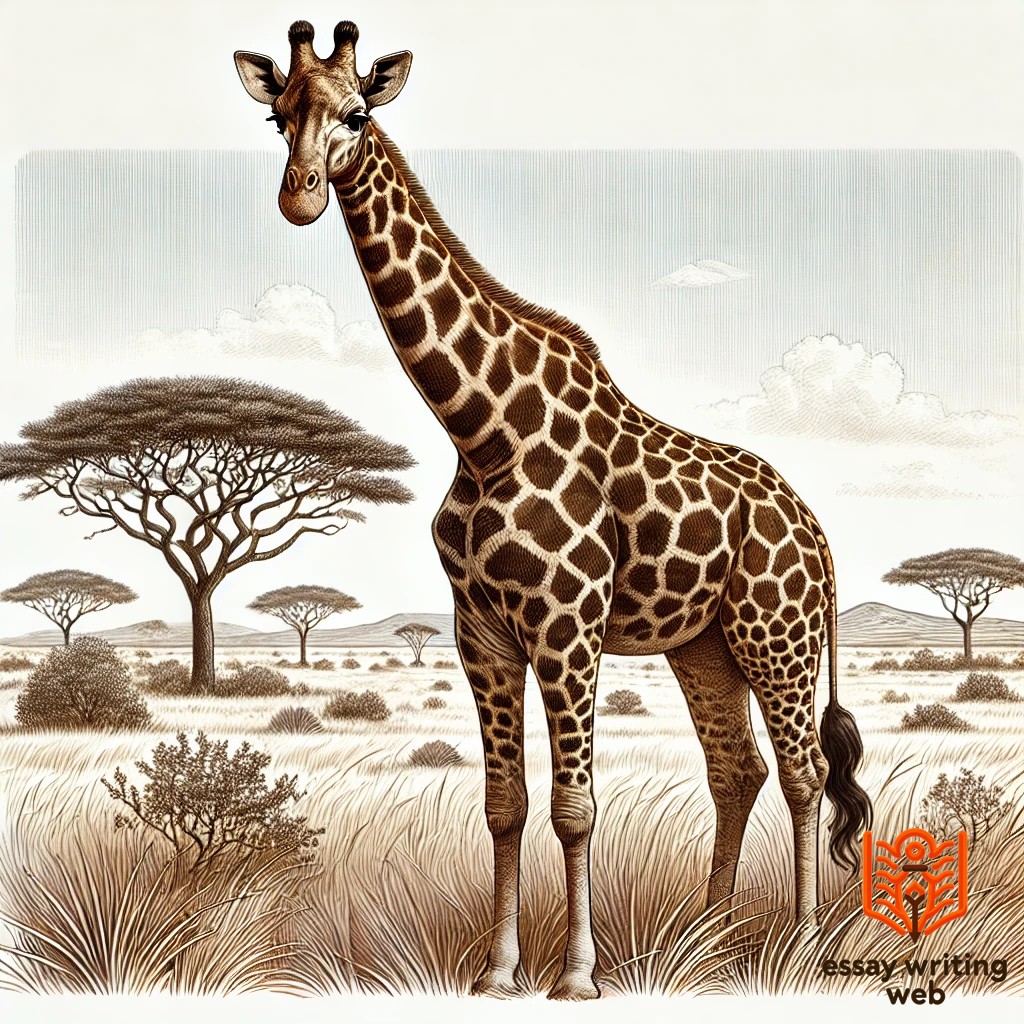
Giraffes, native to Africa, inhabit a wide range of habitats, including savannahs, grasslands, and open woodlands. Their preferred environments are those rich in acacia trees, a primary source of their food. These tall animals are well-adapted to their surroundings, where their long necks allow them to reach leaves high above the ground, giving them a competitive advantage over other herbivores.
Giraffes are primarily found in sub-Saharan Africa, with populations distributed across various countries depending on the species and subspecies. For instance, the Northern giraffe inhabits regions in Chad, Sudan, and Kenya, while the Southern giraffe is more common in countries like Namibia, Botswana, and South Africa. The Masai giraffe is found in Tanzania and Kenya, and the Reticulated giraffe occupies parts of northern Kenya and southern Ethiopia.
Despite their vast range, giraffe populations are declining due to habitat loss, poaching, and human encroachment. Fragmentation of their natural habitat has led to isolated populations, making conservation efforts critical. In recent years, giraffes have been listed as vulnerable, and various initiatives are underway to protect their remaining habitats and ensure their survival in the wild.
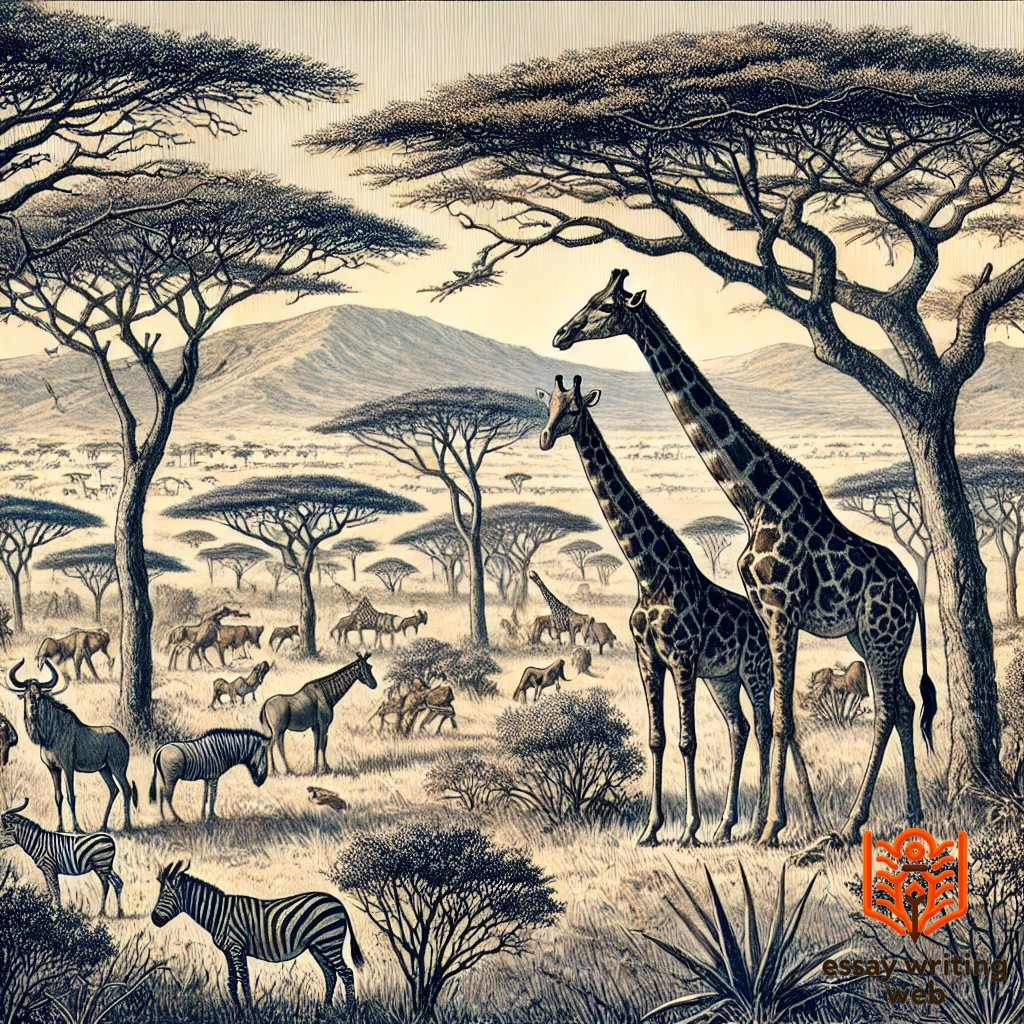
Giraffes are herbivores, primarily feeding on the leaves, shoots, and fruits of trees and shrubs. Their preferred food comes from the acacia tree, which is abundant in the African savannah. The giraffe's long neck and prehensile tongue, which can extend up to 18 inches, allow it to reach high branches that other animals cannot access. This unique adaptation enables them to thrive in environments where competition for food is fierce.
A giraffe’s diet is rich in leaves, with acacia, mimosa, and wild apricot being common staples. Their favorite foods are rich in water content, allowing giraffes to go without drinking for days, especially during the dry season. However, when water is available, they drink from rivers and waterholes, though they do so cautiously because bending down to drink makes them vulnerable to predators.
Giraffes feed for most of the day, often spending up to 16-20 hours browsing for food. They are ruminants, meaning they chew cud—partially digested food brought back up from their stomachs—allowing them to extract maximum nutrients from their fibrous diet. This efficient digestion process helps giraffes maintain their large bodies despite consuming relatively low-nutrient vegetation.
Giraffes' feeding habits also play a crucial role in their ecosystems, as they help in seed dispersal and pruning trees, which promotes new growth. Their unique ability to feed from the treetops not only sustains them but also ensures the balance and health of their habitat.
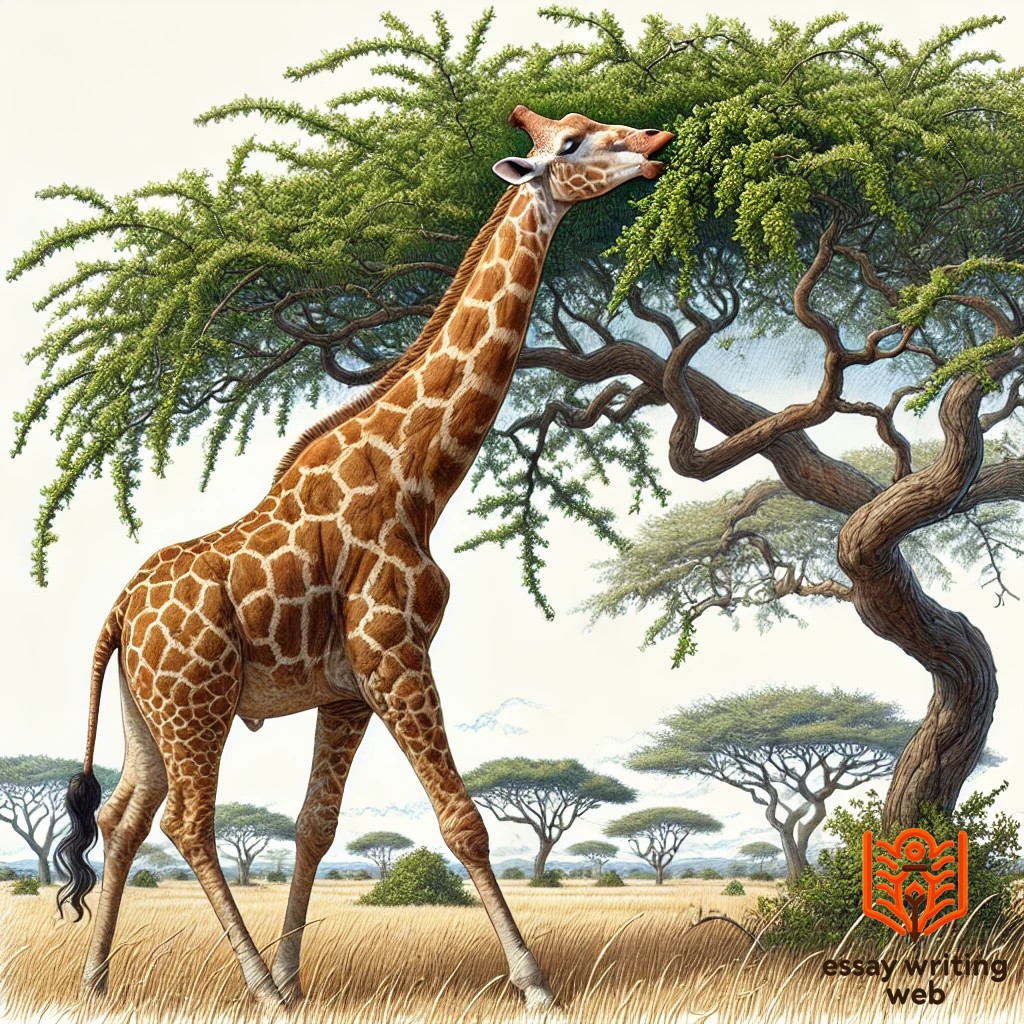
Giraffes are social animals that typically live in loosely structured groups called "towers." These groups are not permanent and can vary in size, often including a mix of males, females, and young giraffes. The flexible social structure allows individuals to come and go as they please, as giraffes do not form tight-knit herds like some other animals.
Giraffes exhibit peaceful social behavior, often seen grazing together or resting in the shade. Females tend to form groups with their young, while males may wander alone or form bachelor groups. Dominance among males is determined through "necking," a behavior in which they swing their long necks to deliver powerful blows. This helps establish hierarchy without severe injury.
Communication among giraffes is subtle and primarily non-verbal. They use body language, such as neck postures and movements, to express dominance or submission. Although giraffes are mostly silent, they do produce sounds such as grunts, snorts, and low-frequency hums, particularly at night. These low-frequency vocalizations are believed to be a form of long-distance communication, as their deep pitch can travel over large distances.
Through their social behaviors and unique forms of communication, giraffes maintain the balance and harmony of their interactions in the wild.
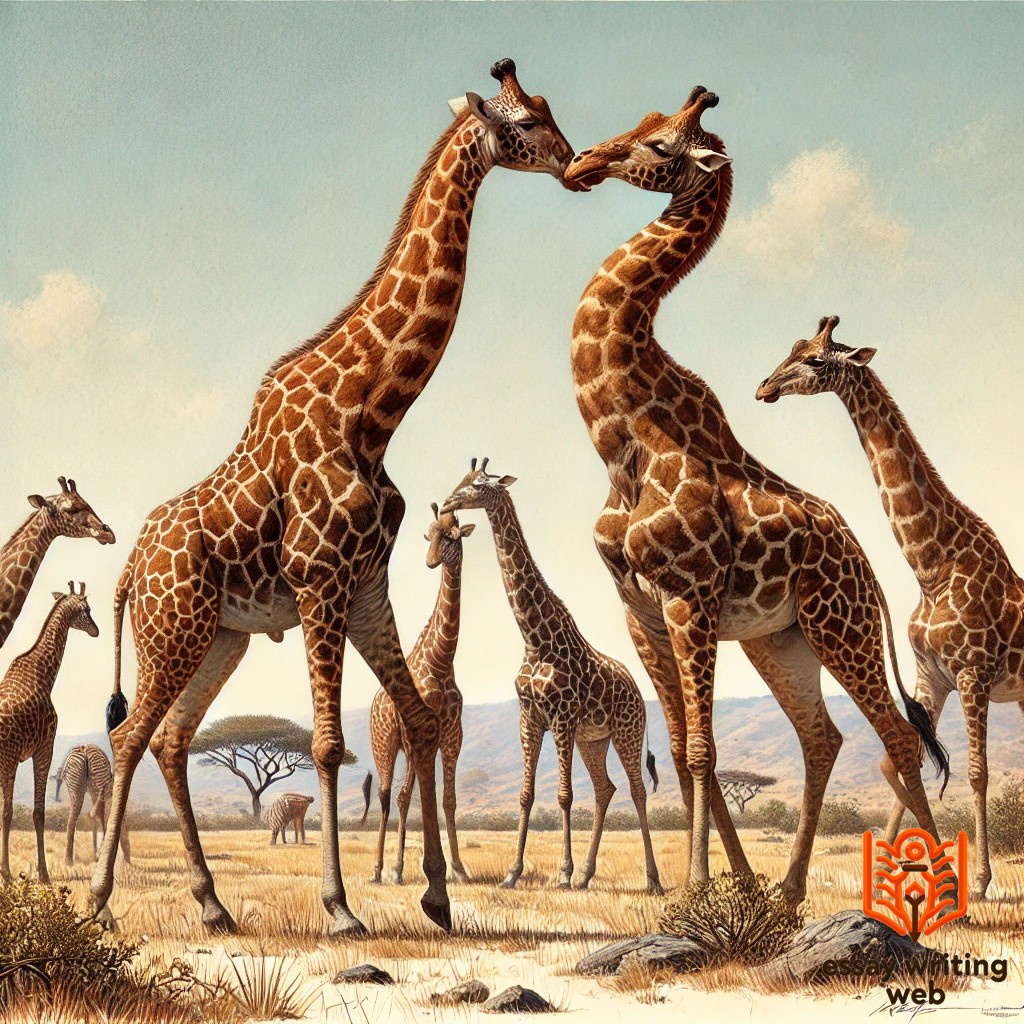
Giraffes have a unique reproductive process that begins with mating rituals, often initiated by males seeking out females in estrus. During courtship, males use a technique called "flehmen," where they sniff the female's urine to detect her fertility. If she is in estrus, mating occurs, and the gestation period lasts around 15 months.
Female giraffes usually give birth standing up, which means the newborn calf drops about 6 feet to the ground at birth. This fall helps stimulate the calf's breathing. Newborn giraffes are about 6 feet tall and weigh between 100 to 150 pounds. Within hours of birth, the calf is able to stand and walk, allowing it to keep up with the herd and avoid predators.
Giraffe calves nurse from their mothers for up to a year, although they start nibbling on leaves at a few weeks old. Mothers are highly protective, and calves often stay within nursery groups while the mothers’ feed. Young giraffes grow rapidly and can reach full height by the age of four.
Giraffes have a lifespan of around 20-25 years in the wild. Males and females lead different life paths, with males typically leaving the herd once they reach maturity to lead solitary lives or form bachelor groups.
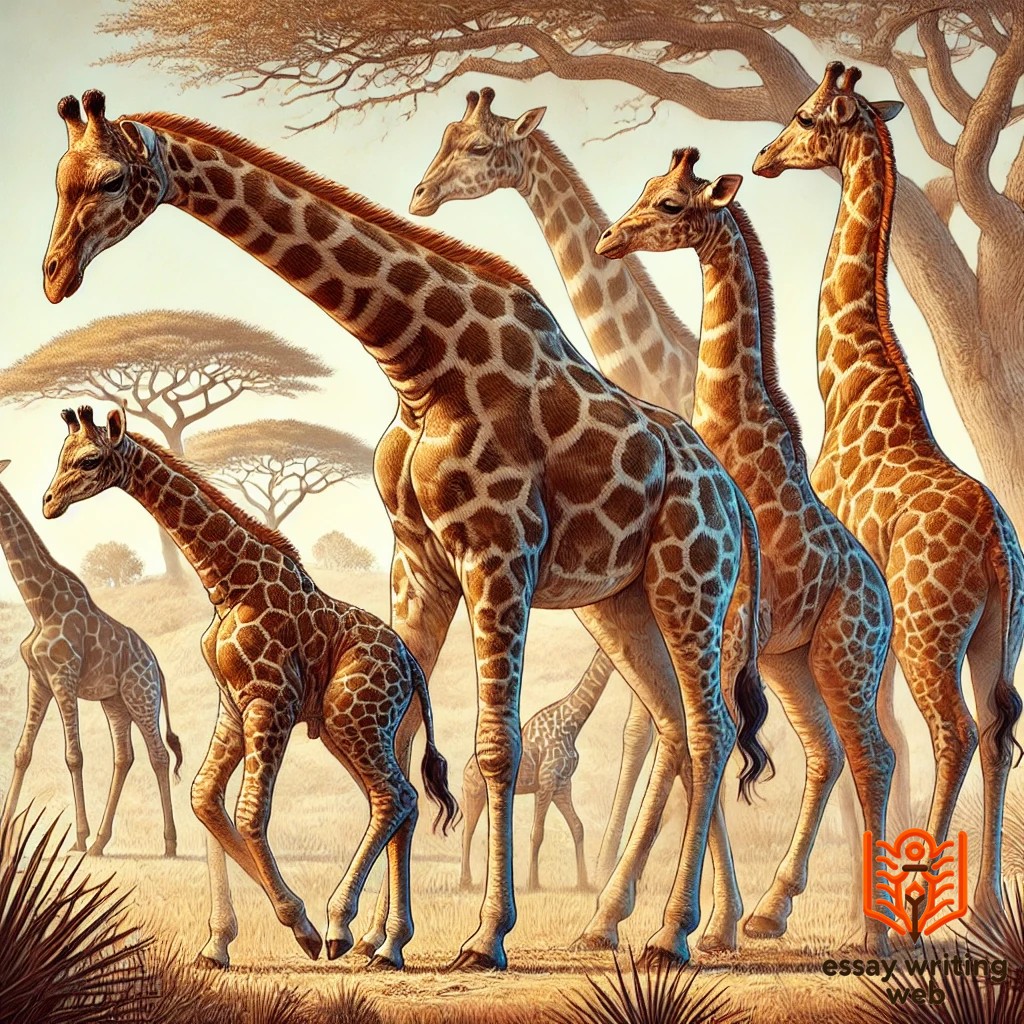
Giraffes, once widespread across the African continent, are now facing significant conservation challenges. Over the past few decades, giraffe populations have declined drastically, leading to their classification as "Vulnerable" on the International Union for Conservation of Nature (IUCN) Red List. Some subspecies, like the Nubian giraffe and Kordofan giraffe, are listed as "Critically Endangered," with fewer than a thousand individuals remaining in the wild.
The primary threats to giraffes include habitat loss due to agricultural expansion, deforestation, and urban development. Human-wildlife conflict, poaching for bushmeat, and illegal hunting for giraffe tails and bones also contribute to their population decline. Additionally, climate change and droughts have further reduced the availability of their natural food sources.
Conservation efforts are underway to protect giraffe populations, focusing on habitat restoration, anti-poaching measures, and breeding programs. Several organizations, including the Giraffe Conservation Foundation (GCF), work to raise awareness and implement conservation strategies to safeguard these majestic animals.
Despite the challenges, giraffes still have a chance for recovery if efforts to protect their habitats and curb poaching continue. Conservation actions, along with increased global awareness, are critical to ensuring that giraffe populations remain stable and thrive in the future.

Giraffes have long held a special place in the cultures and traditions of various African communities. Known for their grace and towering presence, they are often viewed as symbols of peace, elegance, and uniqueness. In many African folktales, the giraffe is celebrated for its height and vision, representing the ability to see far into the future or gain insight from a higher perspective.
In certain tribes, giraffes are seen as spiritual creatures, believed to bring blessings and protection. Their distinct appearance—long neck, slender legs, and patterned coat—has made them the subject of artwork, carvings, and totems throughout Africa. Giraffe imagery is frequently used in traditional African art and handicrafts, symbolizing beauty, wisdom, and nature's harmony.
Beyond Africa, giraffes have captured the imagination of people worldwide. In Western culture, they are often associated with wonder and curiosity, appearing in children's books, films, and zoo exhibitions. They symbolize rarity and distinctiveness, traits that inspire admiration.
However, as giraffes face growing threats in the wild, their cultural significance also becomes a reminder of the importance of conservation. Protecting giraffes is not just about preserving an animal species but also about safeguarding a symbol that holds deep meaning for cultures across the globe.
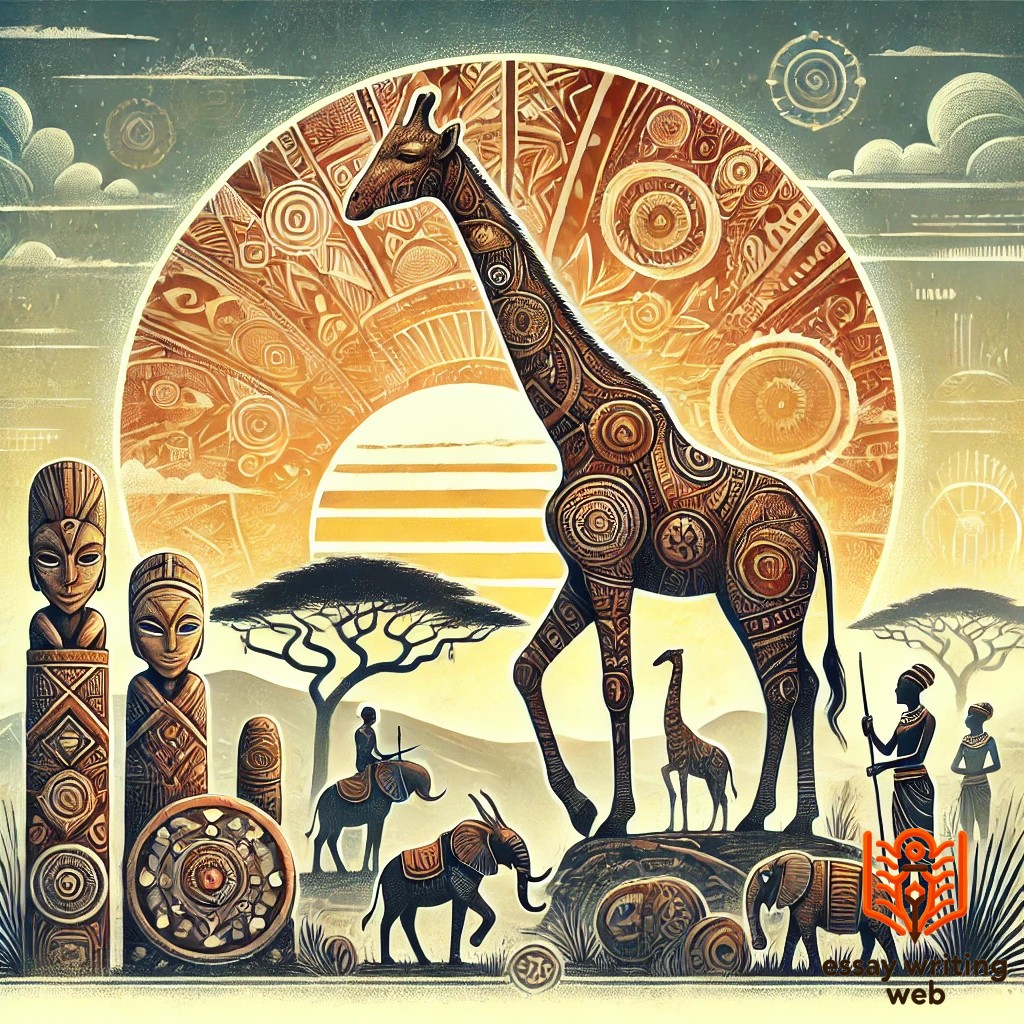
Giraffes, the tallest land animals, are full of fascinating traits that make them unique in the animal kingdom. Standing up to 18 feet tall, their long necks are their most distinctive feature, yet they have the same number of neck vertebrae as humans—seven. Each vertebra in a giraffe’s neck is elongated, allowing them to reach high branches for food.
Despite their long necks, giraffes have relatively short vocal cords and communicate using low-frequency sounds, inaudible to human ears. They also hum at night, which scientists believe might be a way of staying connected with their group.
Giraffes are excellent runners and can reach speeds of up to 35 miles per hour over short distances. When walking, they have a unique gait, moving both legs on one side of their body simultaneously, creating a graceful and swinging motion.
Interestingly, giraffes only sleep for short periods, usually about 30 minutes to two hours a day, often while standing. This helps them stay alert to potential predators like lions.
Another fun fact is that giraffes rarely drink water. They get most of their hydration from the plants they eat, allowing them to survive in dry savannah environments. These intriguing traits contribute to the giraffe’s status as one of the most captivating creatures on Earth.
